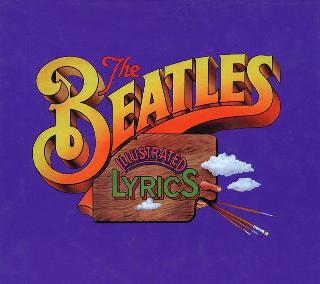Index
Home
Vorige
We Can Work It Out
Composer(s) : Lennon and McCartney
Year : 1965
Chords/Tabs: We Can Work It Out
Notes On "We Can Work It Out" (WCWIO)
Copyright 1989 Alan W. Pollack
All Rights Reserved
We Can Work it Out is a deceptively simple example of how innovative the
Boys could be within the framework of what on the surface is a 2:10 single
with alternating verse and refrain. Some observations from the ol' perfessor.
Form
Alternation of verse and refrain is as follows:
A1 -> A2 -> B -> A1 -> B -> A1 -> brief ending.
What's slightly unusual is that there is no intro, no break, no fade out.
The verse is repeated only the first time; in many other songs, the A section
would be repeated in the middle as well with the repetition in the form of
a guitar break.
The slight asymmetry works very well. If you imagine the A section repeated
at any point of the song other than the first time I believe it would drag;
If you ommit the first repeat you feel rushed into the refrain.
Harmonic Organization
The choice of keys and chord progressions here is straightforward
compared to other songs; no tricky chromatic progressions (e.g., "Help!" intro)
or remote modulations (e.g., You're Gonna Lose that Girl mid-section).
The verses are in D major, the refrain is in B minor, the "relative
minor" of D; pretty standard.
Two details worth noting --
- the use of the modal chord progression in the opening phrase to establish
the key (D-C-D) instead of the "V" (A major) chord which doesn't make an
appearance until the very end of the verse section.
- The verse and refrain have different harmonic shapes. The verse is open
ended in that it procedes from the tonic eventually to the dominant chord
which ultimately wants resolution: I-VII(!)-I-IV-V; it therefore flows into
the refrain even though the B-minor (VI) chord which follows isn't exactly
what would be most expected. It's this hanging dominant chord, by the way
which requires the brief ending to tie things up neatly. The refrain,
by contrast is closed in shape: I-VI-V-I. This closed-ness is part of
why the return to the original key seems somewhat abrupt; of course
the rhythm (see next) plays a part in that too.
Rhythm and Phrasing
Here's where things really get interesting! Compared to other songs
(e.g. Can't Buy Me Love) where phrases are all 4-measures long and
come in 16 measure verses and refrains of 4-times-4, this song does
some fancy things.
The verses are indeed 16 measures long but are divided into three
phrases in a 6+6+4 pattern. This lends them a bit of a free-verse
quality in spite of the underlying steady 4/4 rhythm.
The refrain indeed contains only 4 measure phrases but these
are organized into a 12 measure section of 3-times-4 which is
repeated. The asymmetry of the this three line refrain is effectively
underscored by the shift to the "3/4 oom-pah-pah" rhythm in the
third phrase. This rhythmic shift is interesting in that it is done
without changing the tempo. The length of a measure remains the same
except it is suddenly filled for one phrase with 3 beats instead
of four; a sort of time warp. When the verse returns after this
it sounds faster but isn't really!
Melodic Motif
The melody and the accompaniment of the song is "appoggiatura" intensive;
(i.e. this is a technical term defined as follows: "a 'leaning note', normally
one step above the main note. It usually creates a dissonance in the harmony
and resolves by step on to the main note on the following weak beat." Grove
Dictionary, quoted without permission.) A couple of highlighted lyric
fragments to show where these babys are:
Think of what I'm *SAY_ING
*WE CAN* work it out.
*WE CAN* work it *OU-UT.*
... and there's no *ti-i-i-i--ime*
fussing and *FIGHT-ING* my friend
The instrumental part also exhibits this tendency. In Take 1 you can
hear a lot of leaning tones in top line of the rhythm guitar. It even
carries through to the final melodic riff of the ending.
Perhaps the best example (and also one of *the highlights of the entire song*)
is in the refrain where the harmonium sustains the note B-natural through
a change of chord from B-minor, to G major (where it belongs) and continues
to hold it through the shift down to F#major before letting it fall finally
to A#. Again, the take 2 we're privileged to have with the forward mixed
harmonium really underscores it.
A-a-a-nyway, there's still more one could say but I think I've overdone it
here plenty for one day; is there anyone I haven't alienated :-). WARNING:
this *could* become part of a series if you don't watch out.
Alan (awp@mirror.tmc.com)
---
"They tried to fob you off on this musical charlatan,
but *I* gave him the test."
Ook op Yesterday and Today:
Ook op Past Masters, Vols. 2:
Ook op 1962-1966:
Ook op 1:
(c) 2024 Serge Girard


 (c) Alan Aldrigde, The Beatles Illustrated Lyrics
(c) Alan Aldrigde, The Beatles Illustrated Lyrics